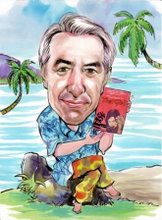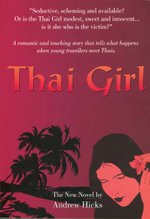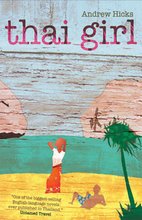
At the village wat we remember family who have passed on.

Making offerings of food and alcohol to propitiate their spirits.





The animist shrine in the temple grounds.

Tribute is paid to a small laterite rock.

“Tomorrow we go Ban Lamong… take food to grandpapa,” says Cat breezily.
“But he died years ago,” I reply, puzzled for a moment before I realize she’s talking about the annual ceremony at the temple remembering her mother’s dead relatives.
Towards the end of pansaa, the Buddhist ‘lent’, it is the custom of the Suay people to gather at the temple where their family members have been cremated and to hold a ceremony with the monks in their remembrance.
Curiously this coincides exactly with the Chinese ceremony of Ching Ming when families gather at the ancestral graves with food offerings and joss sticks and sweep the graves. I used to watch this at crowded ceremonies in Hong Kong and it looked a happy occasion when all the family made the effort to gather together and honour the departed. It was more like a party than mourning, which was thoroughly healthy and appropriate.
To me it seems a major omission that in the West we have no such custom. We cremate our dead in a clinical crematorium and quickly move on with little ritual or formal grieving. There is no grave to return to and we have no tradition of coming together to remember them at a particular time. Our elders seem to be readily forgotten.
Not so in Suay culture, of whom Cat’s mother is one. Here the spirits of the deceased are all around and need to be attended to and kept sweet. Thus it was that we all climbed into the pickup that morning and headed off to the next village where Cat’s mother had been born and raised.
It was a grey day, heavy with rainy season cloud as we arrived in the temple precincts and parked by the cremation ground. The first small ceremony was to make offerings of food and alcohol to the spirits of the dead. These were placed at the foot of a tree and the old aunties and uncles sat round, pouring alcohol into bowls and presenting the sticky rice to grandpapa.
Then mats were laid on the ground and four elderly monks in saffron robes arrived and sat in a row under the trees. There then began a long formal ceremony in which they chanted the names of those to be remembered and went through the usual formal chants in Sanskrit.
“Bhut thang saranang katchami.”
Then everyone went off to the temple hall while I waited outside. As always there were long announcements on the battered PA system, including lists of small donations given by various locals, often of ten or twenty baht.
Waiting by the pickup I'd noticed a curiosity, a small animist temple right here in the grounds of the Buddhist temple. As I watched, three ladies walked across to it and started making food offerings to its very pagan altar. On this was a large chunk of laterite rock with a ribbon around it, various small figures and the remains of old food offerings. They of course were very amused about the farang with his camera and chattered happily away to me. The one thing I heard was that one of them said they were giving food to Buddha.
I am constantly fascinated by this commingling of Buddhist and animist ritual and the complete failure to distinguish between the two. First of all, propitiating the spirits of the ancestors by the Suay was a wholly animistic ceremony, as appeared from the making of offerings at the foot of the tree. Buddhism and the temple then claim a part as the monks perform their rituals, while on the sidelines further offerings are made to a rock with a ribbon around it.
Just as Christianity, the religion of a jealous god, nevertheless accommodated many pre-christian beliefs and festivals such as that on 25th December, so every organized religion has to absorb existing poly-theistic beliefs and practices. Buddhism is especially tolerant and so happily co-exists with the animism that surrounds it. Monks participating in animistic rituals is thus to be expected but I do sometimes wonder how much of Buddhism actually remains in Thailand once animism has stripped away.
The ladies in the animist shrine said they were giving food to Buddha but what really defines a religion is not the labels but their actual beliefs. Ask a British Christian or a Thai Buddhist what they actually believe in and you’d hardly get a cogent answer. What I suspect though is that the minds of the people around here are filled with a strong belief in the spirits of their ancestors and of the forces of nature that surrounds them. What room that allows for true Buddhist philosophy or observance I have very little idea.
The ceremony in Ban Lamong though was one of the nicer ones and every society should likewise mark an annual occasion when everyone comes together as a family to remember the past and those who are no longer with them.
It strikes me that in this respect our western society is decidedly lacking.
Should we not do this too?
Andrew Hicks The “Thai Girl” Blog September 2009





10 comments:
Andrew a couple of observations.
I was interested to see 4 monks in the photographs-I got the impression that it should usually be and odd number. 9 being the most auspicious?
Secondly I too think respect is missing from Western (UK) society. Whatever problems Thailand may have I do believe we can learn a lot from some of the laity.
It also coinsides with the Pchum Ben holiday in Cambodia. All people return home to honor their ancestors and Phnom Penh is probalby a little bit like when the KR forced the population out of the city 25 years ago.
hi,
it doesn't coincide with the Chinese festival of Qing Ming (which falls in early April, & is for remembering one's own ancestors), but with Zhong Yuan, another Chinese festival for remembering the dead (not just one's relatives, but also unrelated 'wandering/hungry ghosts', incl those who have no living relatives to make offerings to them).
in Laos it's called Boun Hor Khao Padap Din or Boun Khao Salak. for Mahayana Buddhists it's called Ullambana day, & is celebrated as Obon festival in Japan. in Singapore & Malaysia, Zhong Yuan aka. Hungry Ghosts festival lasts for an entire month.
btw Thai monks don't chant Sanskrit, they chant Pali :P
love reading your blog, keep writing :)
i do not think they were paying tribute to the rock. It looks to be a sima stone and they are praying to a concept not a stone.
If you are familiar with the historical differences between thamayut and mahanikai in thailand you will realize that it is all quiet common in isaan
also
“Bhut thang saranang katchami.”
is actually buddha saranam gatchami
which is respect to the triple gem
buddha, dhamma, sangha
Thanks for puting me right on so many things.
For my blog I do absolutely no formal research and just write a stream of consciousness off the top of my head from what those around me tell me, from my own observations and personal knowledge. I think it's better that way as the only possible originality I have to offer is my experience of living here in the village.
So please keep correcting me!
I didn't really think they were praying to the rock though(which is of laterite, like the rock the ancient Kmer used for the base of many of their temples). As the ladies said, they were praying to Buddha or to some such concept.
hi Andrew...
Bought ur new book in airport on my way to my wife's hometown. Good info!
Thai people has many deity and festivals to pray with. As for me, I may not understand what's about but I just go along with them. I think we have no choice, isnt it..
Nice posting, i will buy the book and read it. This ia also a good book but it is in Dutch: http://www.thailandblog.nl/boekrecensies/de-glimlach-achter-opwindend-thailand/
It would have been great to see the fight between the frog and crab. If you took a video you should put it on youtube and provide a link.
I like the Buddhist religion. Unlike Christianity where only one jealous God is tolerated and all other beliefs are frowned upon, Buddhism is a very open and tolerant religions. Buddhist adopt many other religious beliefs and practices from Hinduism to animism. In Thailand, Christmas is a big event...though more of a commercial event than religious.
Islam,Judaism and Christianity are too intolerant of other religions... which is probably why their history is so bloody: inquisitions, crusades, burning of heretics.
Buddhism is a much more peaceful religion
Post a Comment